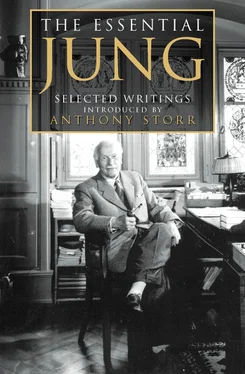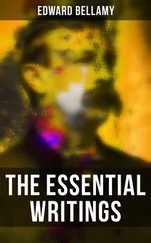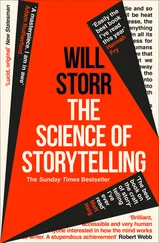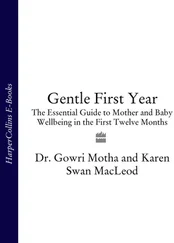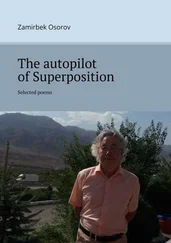Selected and introduced by
Harper Press
An Imprint of HarperCollinsPublishers 77–85 Fulham Palace Road Hammersmith, London, W6 8JB
Published, with a revised bibliography, by Fontana Press 1998
First published in Great Britain in 1983 by Fontana Paperbacks as Jung: Selected Writings, part of the Fontana Pocket Readers series. Second Edition 1986
Copyright © C. G. Jung 1983 Introduction copyright © Anthony Storr, 1983
A catalogue record for this book is available from the British Library
All rights reserved under International and Pan-American Copyright Conventions. By payment of the required fees, you have been granted the non-exclusive, non-transferable right to access and read the text of this e-book on-screen. No part of this text may be reproduced, transmitted, down-loaded, decompiled, reverse engineered, or stored in or introduced into any information storage and retrieval system, in any form or by any means, whether electronic or mechanical, now known or hereinafter invented, without the express written permission of HarperCollins e-books.
HarperCollinsPublishers has made every reasonable effort to ensure that any picture content and written content in this ebook has been included or removed in accordance with the contractual and technological constraints in operation at the time of publication.
Source ISBN: 9780006530657
EPub Edition © FEBRUARY 2013 ISBN: 9780007382033
Version: 2014-12-09
Title Page
Copyright
Note on the Text
Preface
Introduction
Part 1 Jung’s Early Work
From “On the Psychology and Pathology of So-called Occult Phenomena” (1902)
From “School Years” Memories, Dreams, Reflections (1962)
From “Tavistock Lecture II” (1935)
From “A Review of the Complex Theory” (1934)
From “Mental Disease and the Psyche” (1928)
From “On the Psychogenesis of Schizophrenia” (1939)
Part 2 Jung’s Involvement with Freud and His Divergence from Freud’s Theories
“Psychoanalysis and Neurosis” (1916)
From “The Theory of Psychoanalysis” (1913)
From “Sigmund Freud” Memories, Dreams, Reflections (1962)
From “On Psychic Energy” (1928)
Part 3 The Development of the Idea of the Collective Unconscious and of Archetypes
From “Recent Thoughts on Schizophrenia” (1957)
From “The Structure of the Psyche” (1927/31)
From “On the Psychology of the Unconscious” Two Essays on Analytical Psychology (1917/26/43)
From “Confrontation with the Unconscious” Memories, Dreams, Reflections (1962)
From “The Stages of Life” (1930/1)
From “Confrontation with the Unconscious” Memories, Dreams, Reflections (1962)
From “Confrontation with the Unconscious” Memories, Dreams, Reflections (1962)
From “Psychological Aspects of the Mother Archetype” (1938/54)
Part 4 Archetypes: Shadow; Anima; Animus; the Persona; the Old Wise Man
From Psychology and Religion (1938/40)
From “The Shadow” Aion ( 1951)
From “The Relations between the Ego and the Unconscious” Two Essays on Analytical Psychology (1929)
From “Definitions” Psychological Types (1921)
From “The Relations between the Ego and the Unconscious” Two Essays on Analytical Psychology (1928)
From “The Syzygy: Anima and Animus” Aion (1951)
From “Confrontation with the Unconscious” Memories, Dreams, Reflections (1962)
From “The Relations between the Ego and the Unconscious” Two Essays on Analytical Psychology (1928)
From “The Phenomenology of the Spirit in Fairytales” (1945/8)
Part 5 Psychological Types and the Self-regulating Psyche
“Introduction” Psychological Types (1921)
“Psychological Typology” (1936)
From “On the Psychology of the Unconscious” Two Essays on Analytical Psychology (1917/26/43)
“The Practical Use of Dream-analysis” (1934)
Part 6 The Development of the Individual
“The Development of Personality” (1934)
From “The Aims of Psychotherapy” (1931)
“Conscious, Unconscious, and Individuation” (1939)
From “Commentary on The Secret of the Golden Flower” (1929)
Part 7 Integration, Wholeness, and the Self
From “Confrontation with the Unconscious” Memories, Dreams, Reflections (1962)
“Mandalas” (1955)
From Psychology and Religion (1938/40)
From Psychology and Religion (1938/40)
From “The Work” Memories, Dreams, Reflections (1962)
“Introduction to the Religious and Psychological Problems of Alchemy” Psychology and Alchemy (1944)
From “The Conjunction” Mysterium Coniunctionis (1955/6)
Part 8 Self and Opposites: God and the Problem of Evil
From “Christ, a Symbol of the Self” Aion (1951)
From Answer to Job (1952)
From Answer to Job (1952)
Part 9 “Unus Mundus and Synchronicity
From “Flying Saucers: a Modern Myth of Things Seen in the Skies” (1958)
From “The Conjunction” Mysterium Coniunctionis (1955/6)
From “On the Nature of the Psyche” (1947/54)
From “Synchronicity: an Acausal Connecting Principle” (1952)
From Answer to Job (1952)
From “Flying Saucers: a Modern Myth of Things Seen in Skies” (1958)
From letter to Father Victor White (10 April 1954)
Part 10 Man and His Future
“The Undiscovered Self (Present and Future)” (1957)
Chronology of Jung’s Life and Work
Keep Reading
Glossary
Bibliography
About the Author
Index
About the Publisher
Bibliographical details of the works from which I have taken extracts – Collected Works (CW), Memories, Dreams, Reflections (MDR), Septem Sermones ad Mortuos, The Freud/Jung Letters and Letters – are given on pages 434–5. English and American page or paragraph numbering diverges only in the case of MDR; when quoting from this book I have given the English hardback edition’s pages followed by those of the American edition.
I have been selective about my inclusion of footnotes, keeping those of Jung’s which illuminate the text or which refer to sources of interest to the non-specialist reader, but omitting his and his editors’ references to works which, particularly in the case of the alchemical volumes, are unobtainable by all but the most dedicated scholars. Where editors’ notes have been retained, they are within square brackets. I have used the bibliographies contained in CW to fill out Jung’s footnotes where appropriate.
Throughout his long life, C. G. Jung was a prolific writer, so that his Collected Works run to no less than eighteen large volumes. In addition, there are two volumes of his letters, a separate volume of his correspondence with Freud, and his autobiography, Memories, Dreams, Reflections. Comparatively few people are prepared to read the whole corpus of this material; but many might welcome the opportunity to become acquainted with Jung’s thought as he himself expounded it. This book is an attempt to distil the essential features of Jung’s psychology as it developed during the course of his life by means of extracts from his own writings. Since Jung’s way of thinking may be unfamiliar to contemporary readers, I have summarized the main features of his thought in an introduction; and I have prefaced the extracts which I have chosen with brief explanatory remarks. But, so far as is possible, I have let Jung present his ideas in his own words. My purpose has been exposition, not criticism; and it must not be assumed that I personally subscribe to everything that Jung wrote.
Читать дальше
